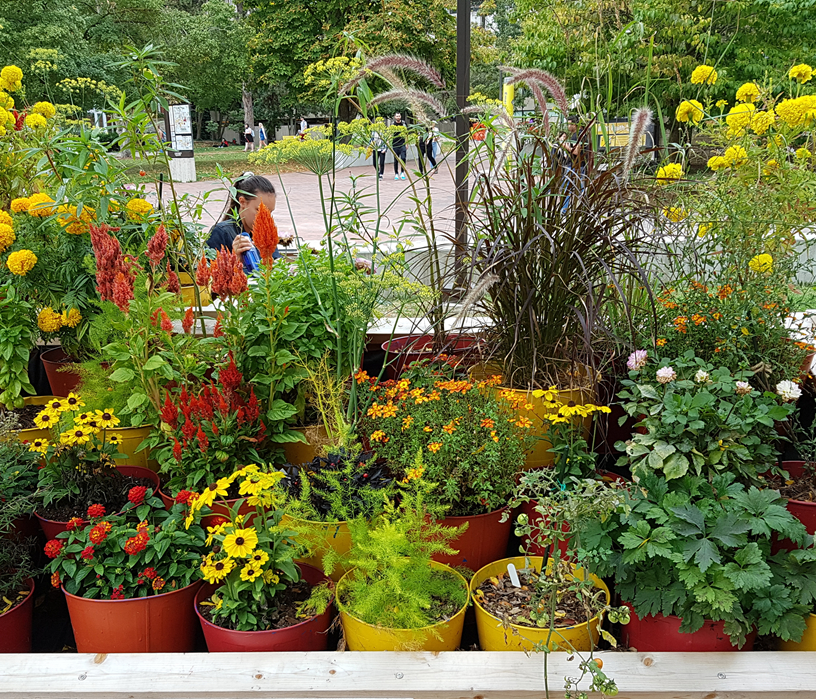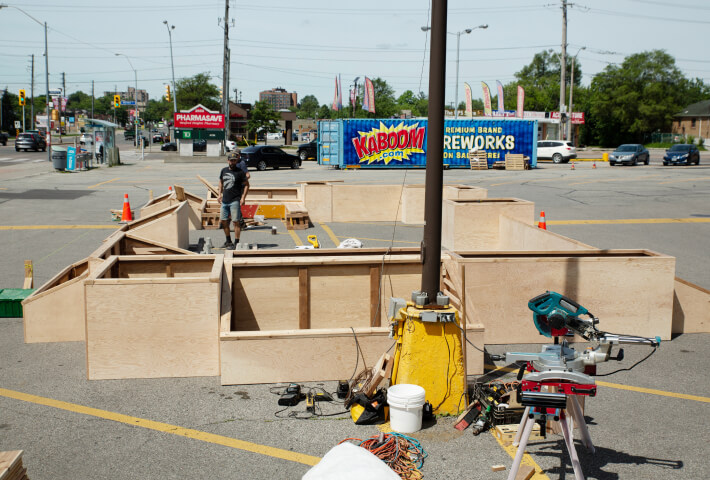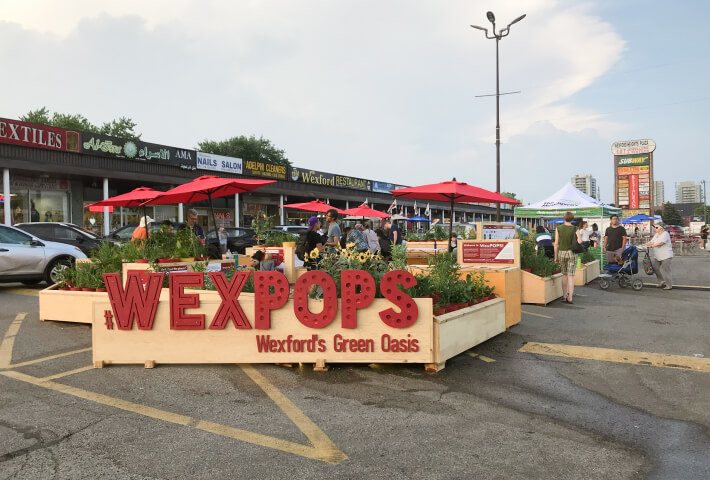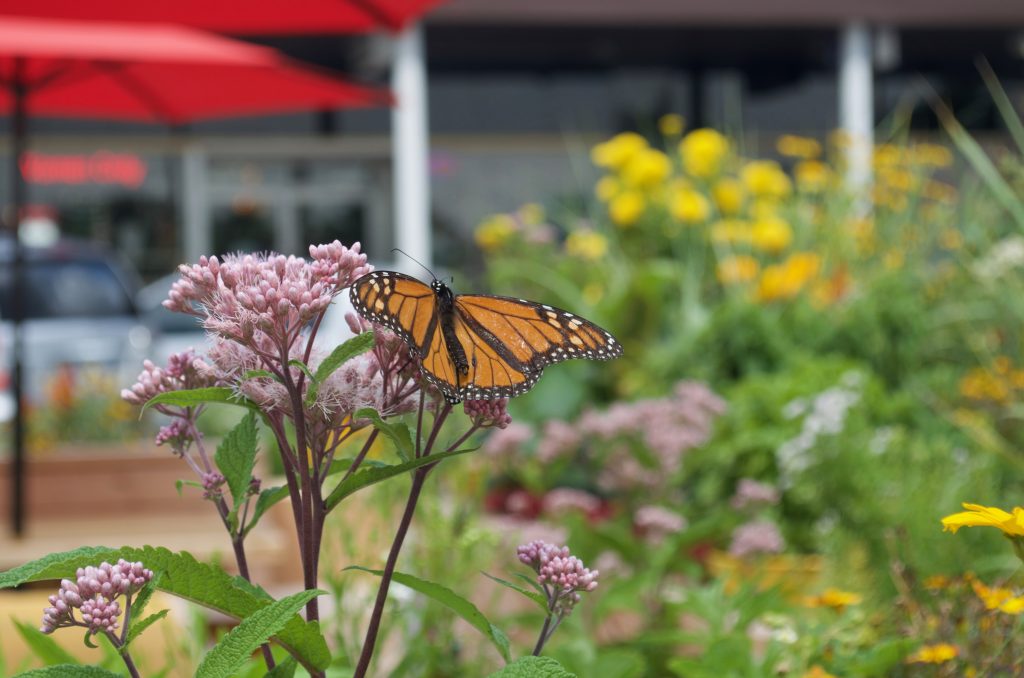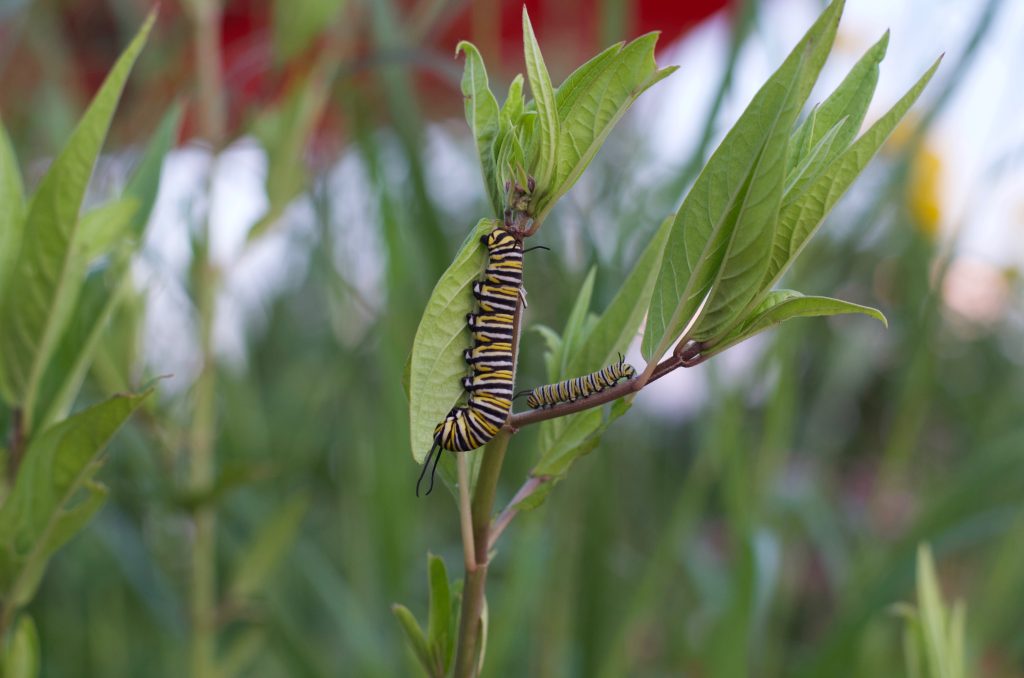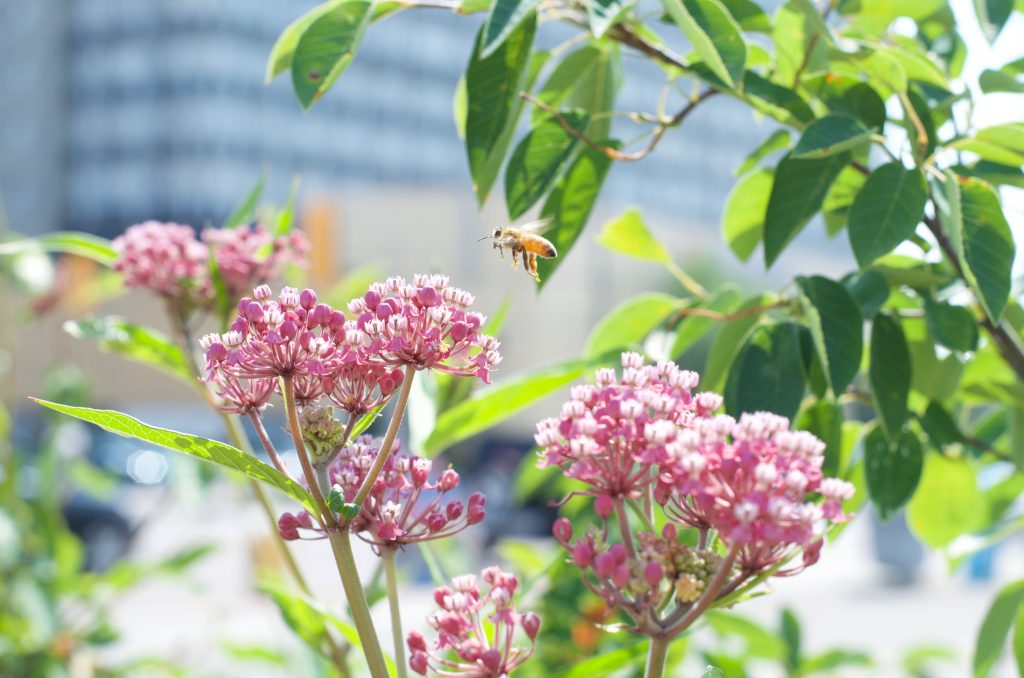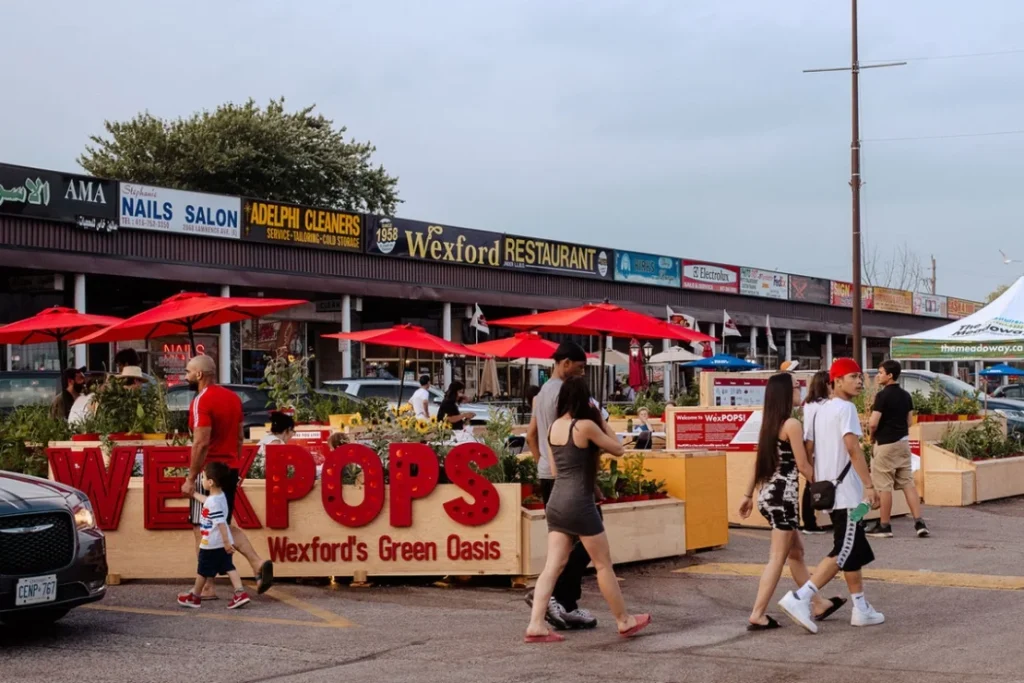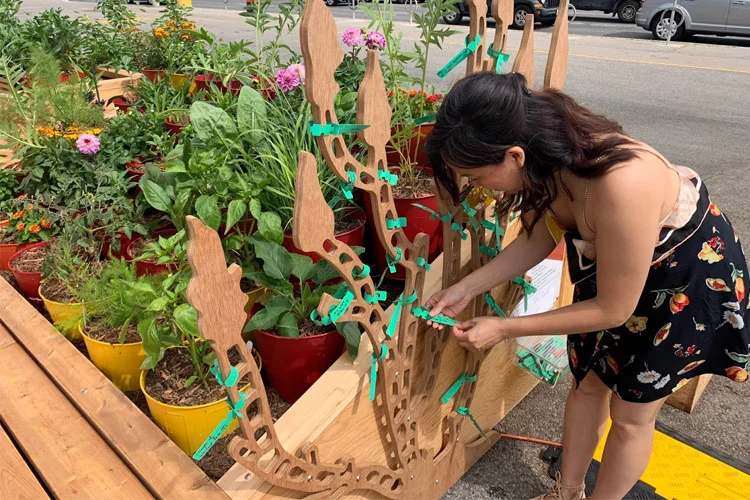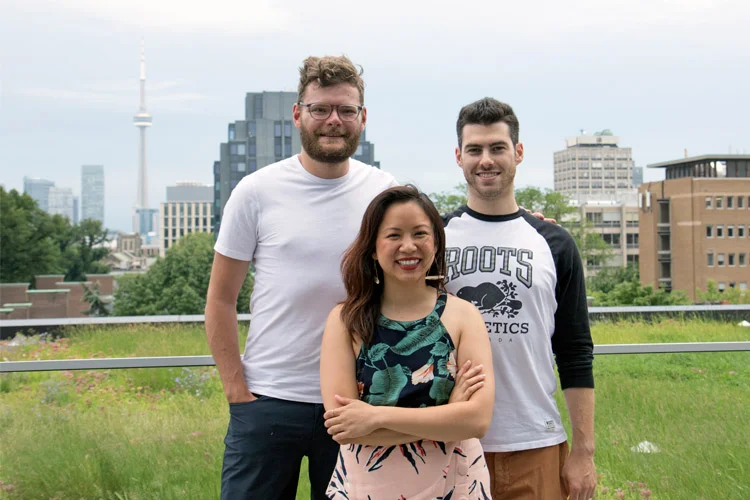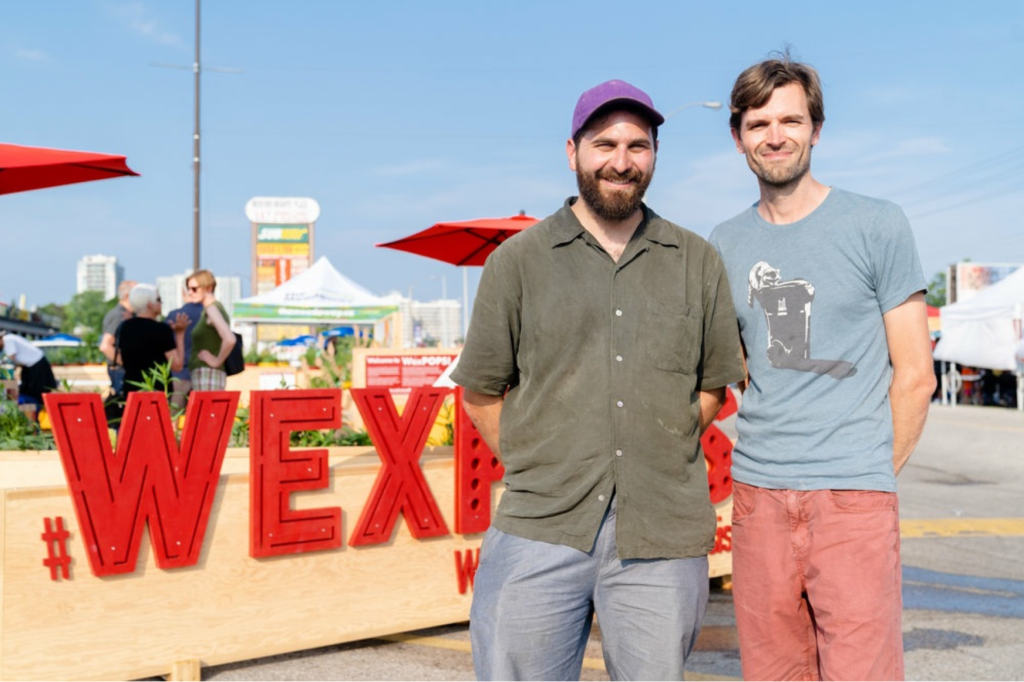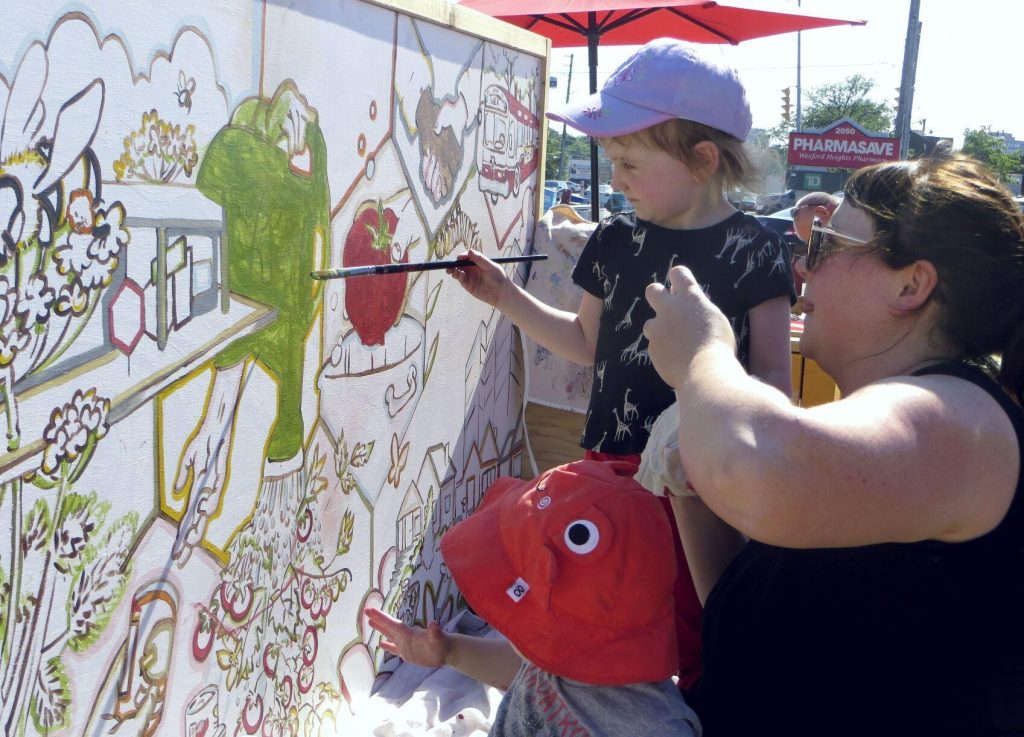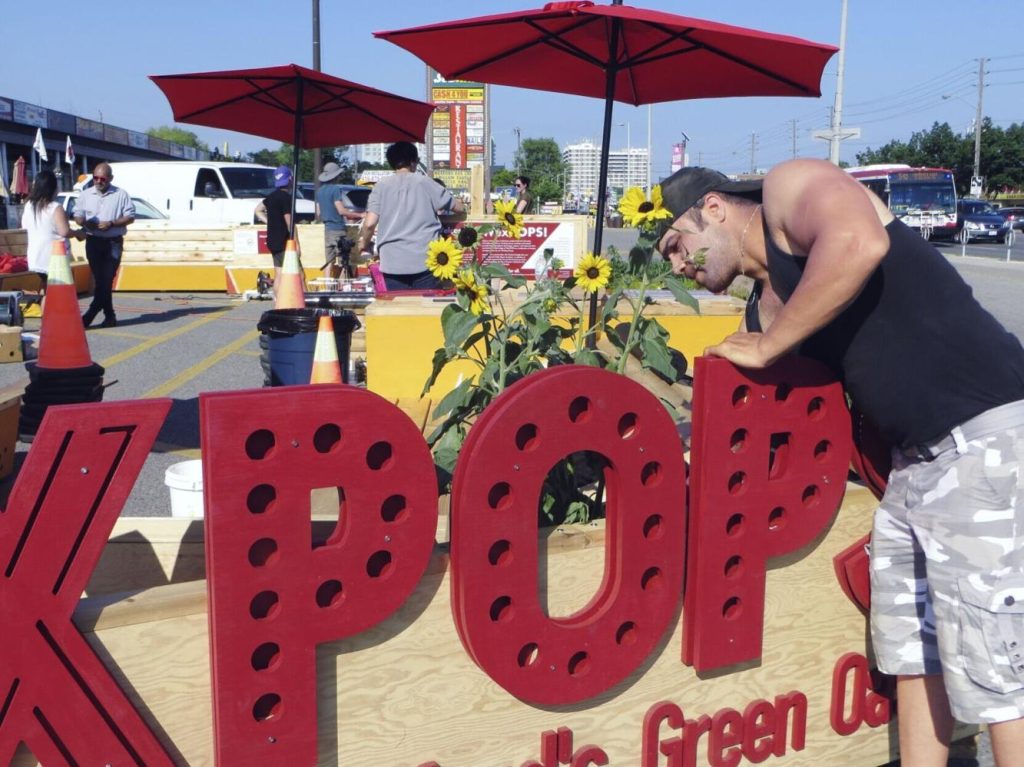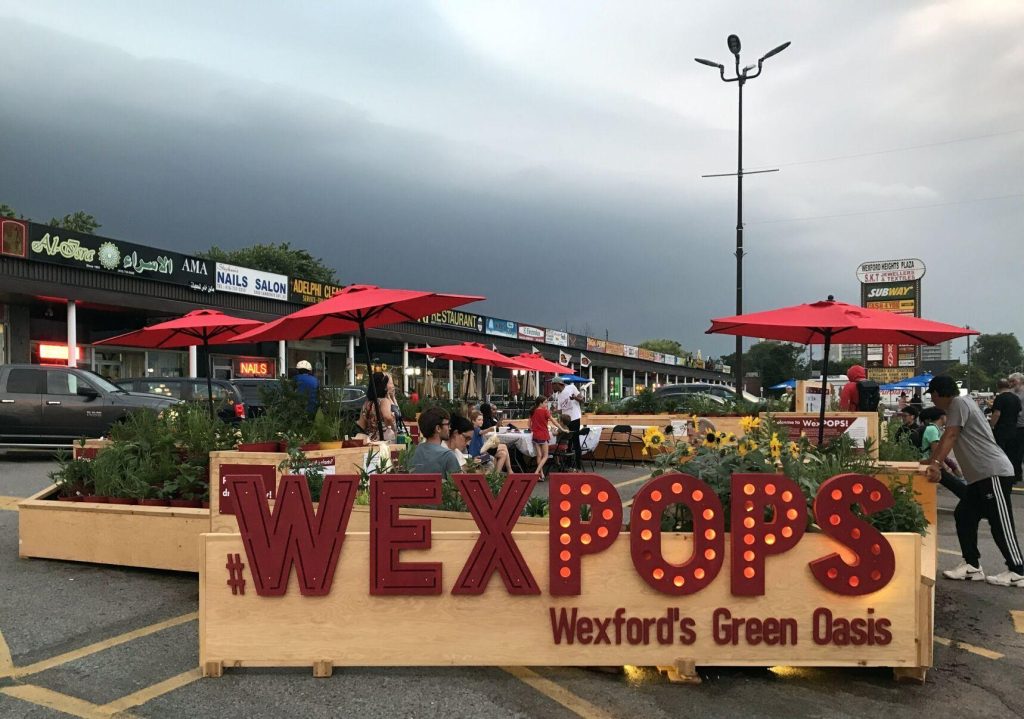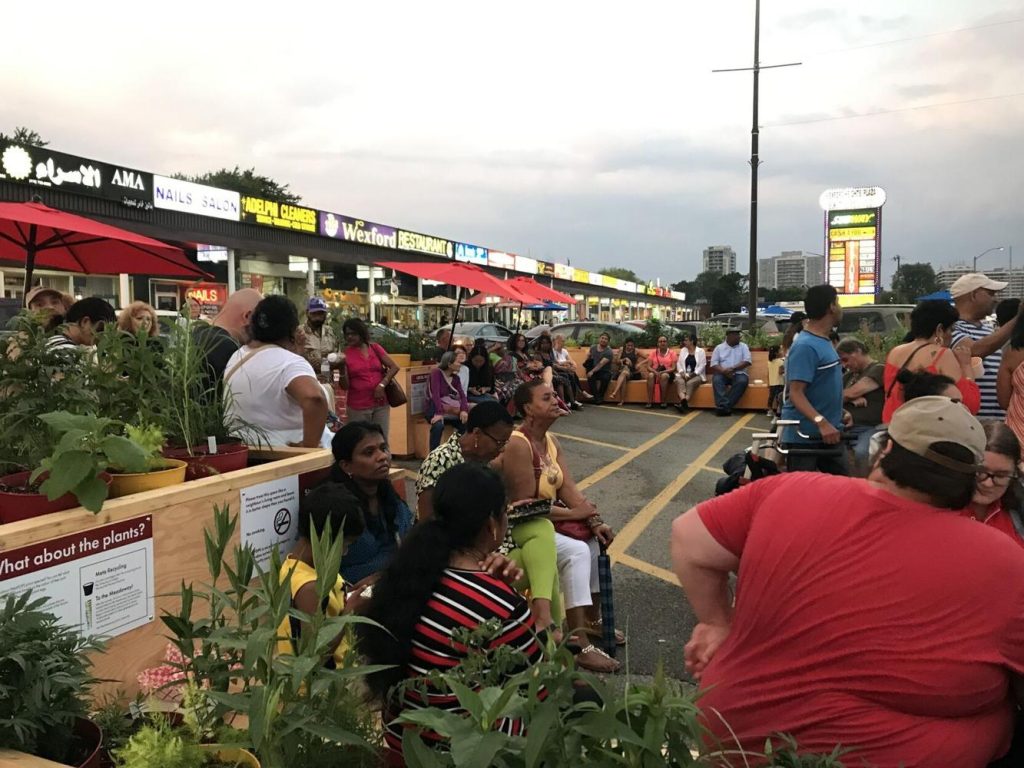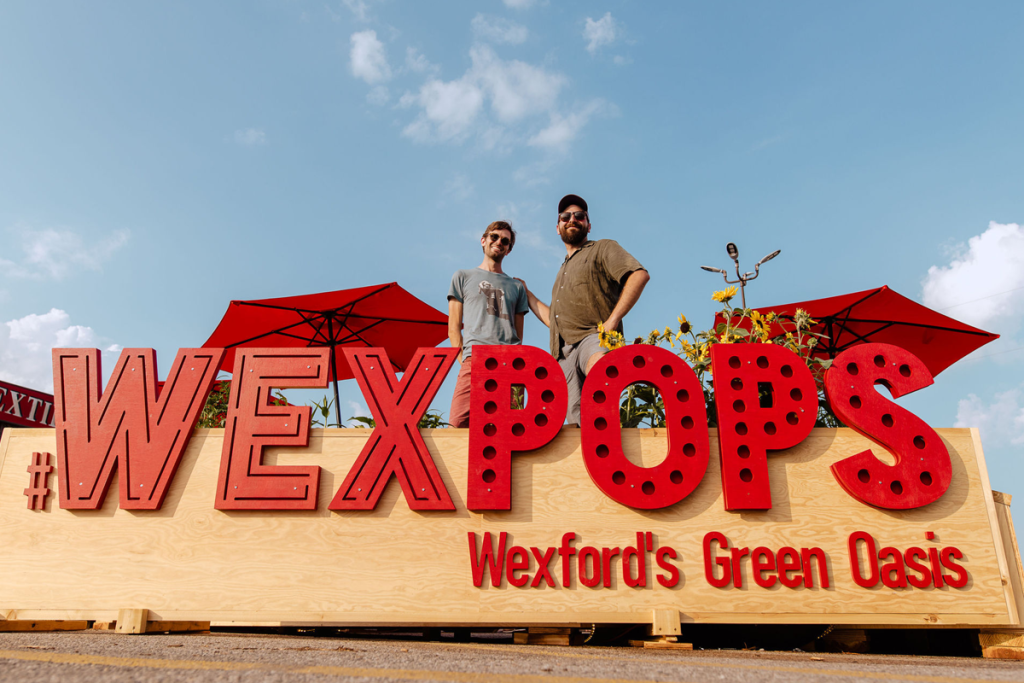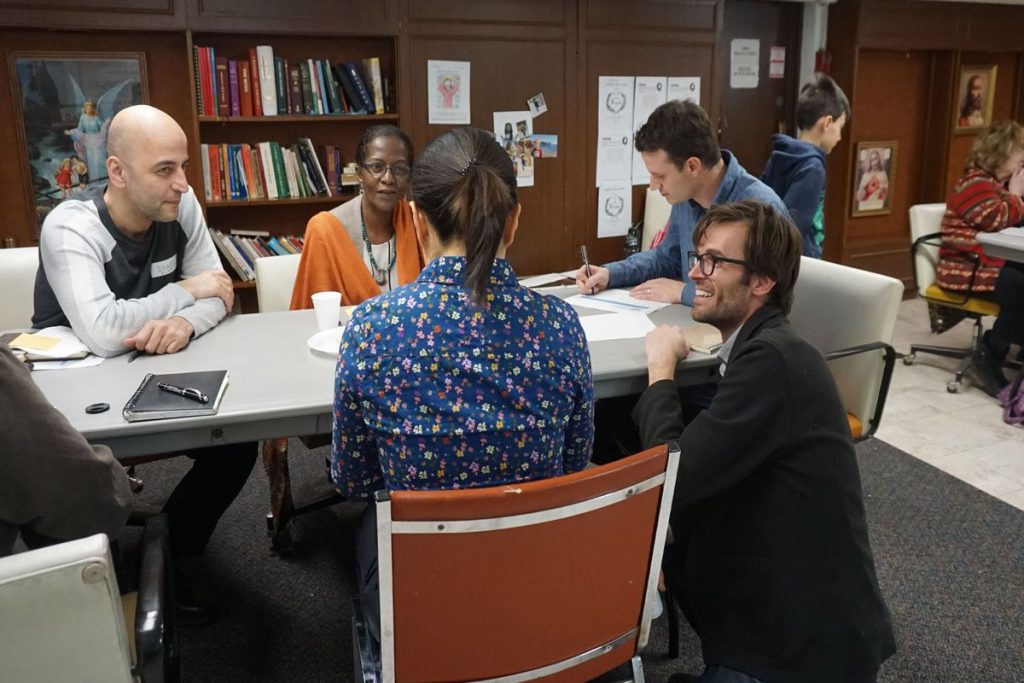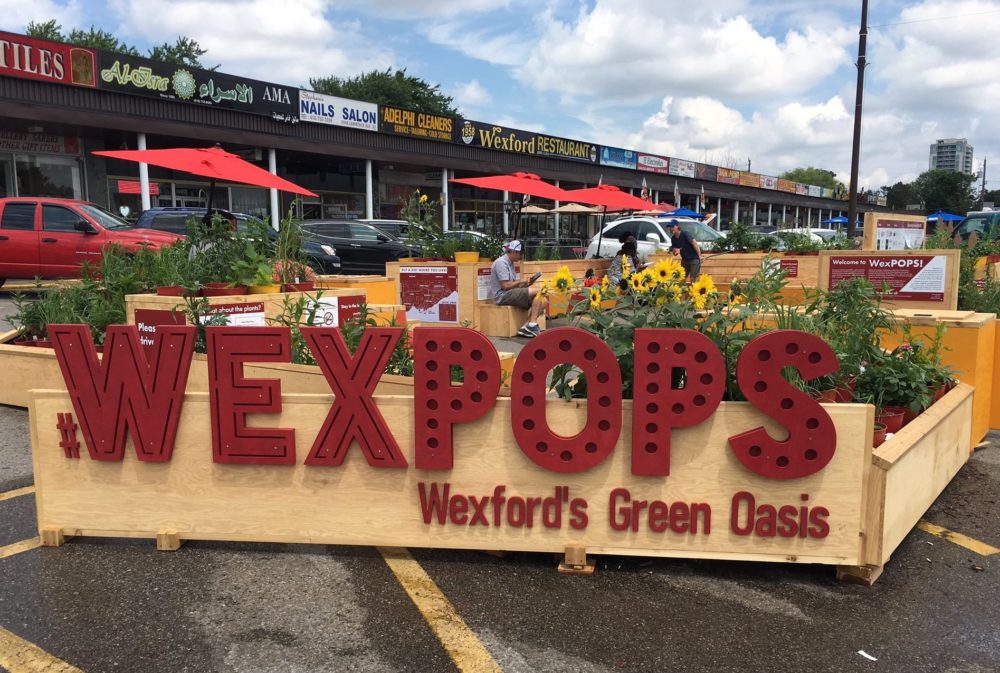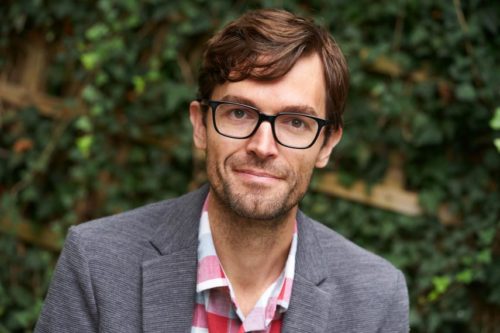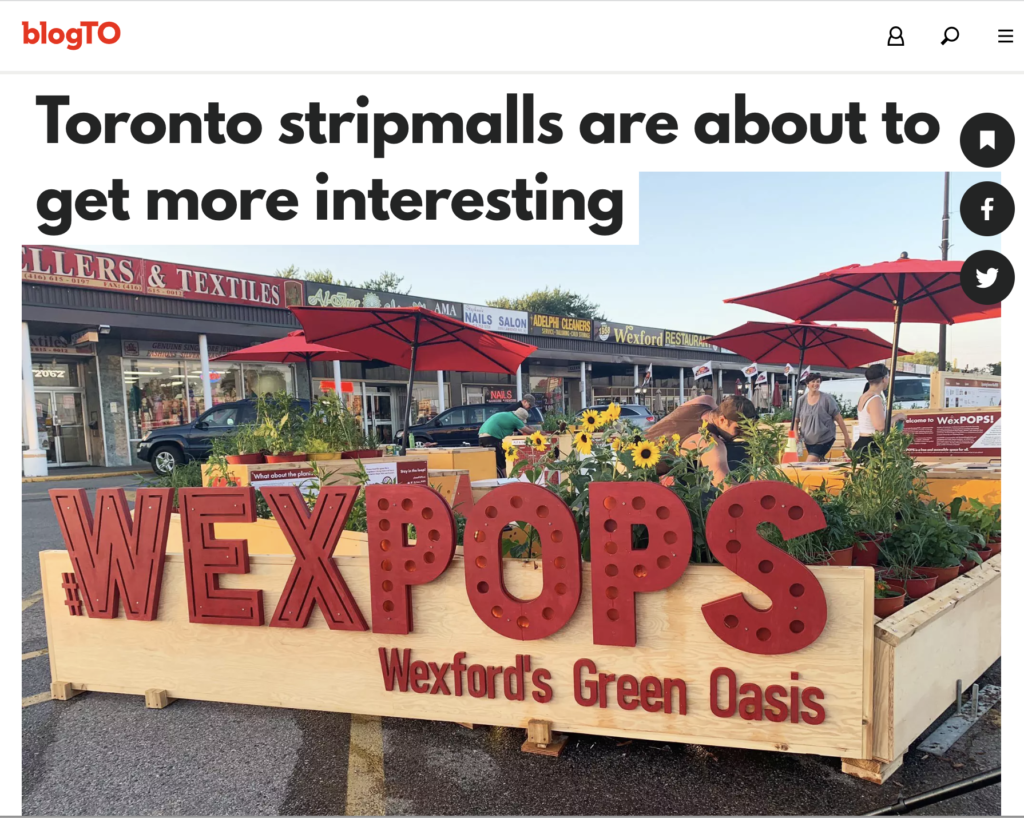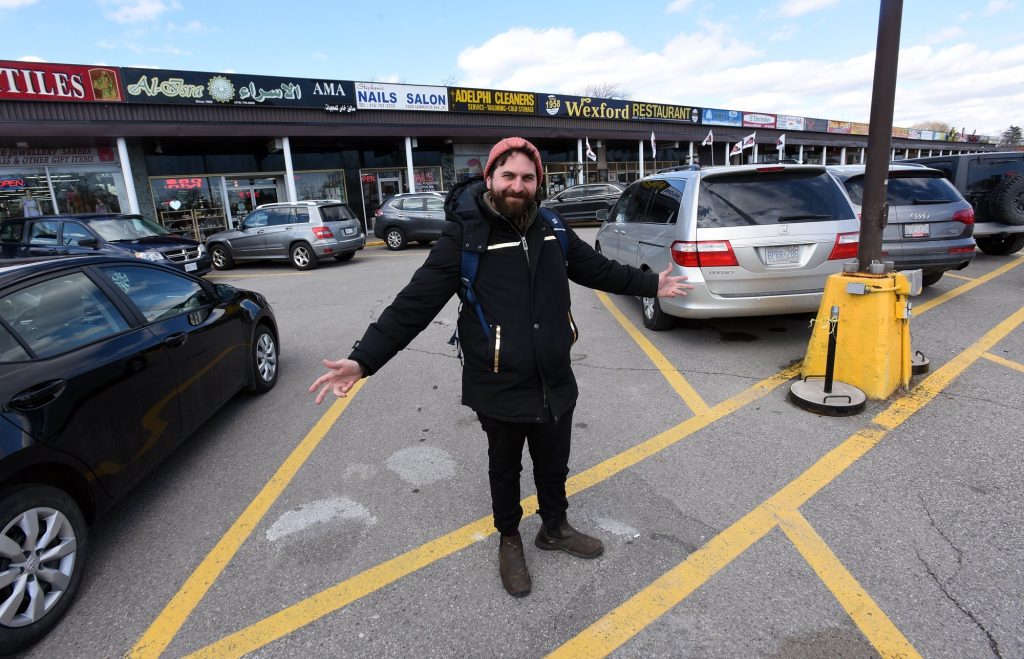GuelphPOPS
plazaPOPS Installation Adds a Pop of Colour to Reynolds Walk

Link to article
If you’ve strolled Reynolds Walk on campus this September, you may have noticed a pop-up relaxation spot installed next to Branion Plaza. The WexPOPS installation is a portable public gathering place that was relocated to U of G from its initial installation earlier this summer in a strip mall parking lot in Scarborough, Ont.
WexPOPS is the pilot installation of the plazaPOPS Initiative – a design and research project led by master of landscape architecture grad Daniel Rotsztain and U of G landscape architecture Profs. Brendan Stewart and Karen Landman.
“Neighbourhood main streets need accessible gathering spaces to support community life and individual well-being,” says Stewart. “PlazaPOPS is testing a high-impact, low cost model to create such spaces in areas that need them most, all in partnership with local businesses who own the land.”
This summer’s POPS (privately owned public space) installation in Wexford Heights Plaza in Scarborough hosted musical acts, workshops and community events.
Designed with community in mind
WexPOPS features a series of modular planters, benches, tables and umbrellas, all clad in marine plywood and trimmed in cedar. The original installation created a comfortable and sheltered space that framed views of the strip mall.
Ben O’Hara, an MLA grad and sessional instructor in the School of Environmental Design and Rural Development, managed the installation’s carpentry. All components were designed as modules that can be reconfigured to suit varying future site conditions and that can be packed flat for easy assembly and storage.
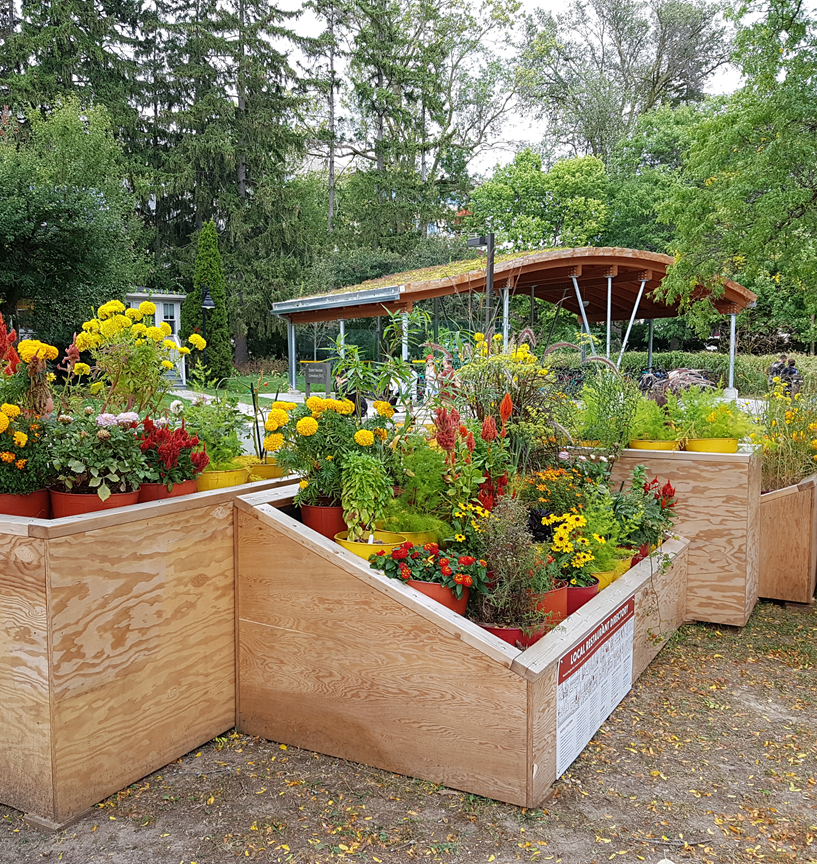
The original installation featured almost 500 plants, which were installed in colour-coded pails recycled from U of G:
> red for native perennials
> orange for annuals
> yellow for edible plants
Most of the native plants were donated to the Toronto and Region Conservation Authority and planted in a stretch of the Meadoway — a utility corridor naturalization project that runs through Scarborough — this September. The annuals and edible plants were brought back to Guelph and incorporated into the installation on campus.
A year of community consultation, planning and design
Retail strip mall plazas are everywhere in suburban North America, Stewart explains. While privately owned, he says, these plazas define main streets and serve as important settings of community life for millions of Canadians. Finding ways to humanize these areas can positively impact many people.
The WexPOPS project was part of a second-year master of landscape architecture design studio this past winter. MLA students worked in teams to develop concepts that were presented and refined through workshops and open houses with Scarborough community members. WexPOPS resulted from more than a year of community consultation, planning and design work.
Stewart and Landman hope to roll out a broader plazaPOPS program across the province.
The reinstallation is supported by the School of Environmental Design and Rural Development, the Sustainability Office and Physical Resources. Learn more about plazaPOPS at www.plazaPOPS.ca and on Instagram and Twitter @plaza_pops.
